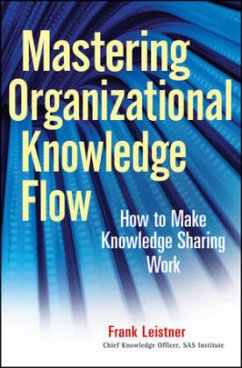
Knowledge Works
The Handbook of Practical Ways to Identify and Solve Common Organizational Problems for Better Performance
Versandkostenfrei!
Versandfertig in über 4 Wochen
59,99 €
inkl. MwSt.
Weitere Ausgaben:

PAYBACK Punkte
30 °P sammeln!
This book presents practical guidance in a highly accessible format on how to improve the way knowledge is used in organizations to solve common organizational problems. It is intended to be a handy guide for whenever knowledge and learning are seen as a factor affecting organisational performance.The book provides organizations with tools to assist them in making connections between different areas of knowledge inside and outside the enterprise to keep ideas fresh and vital. It addresses practical ways to overcome the inevitable contradictions that arise when people work across interfaces in ...
This book presents practical guidance in a highly accessible format on how to improve the way knowledge is used in organizations to solve common organizational problems. It is intended to be a handy guide for whenever knowledge and learning are seen as a factor affecting organisational performance.
The book provides organizations with tools to assist them in making connections between different areas of knowledge inside and outside the enterprise to keep ideas fresh and vital. It addresses practical ways to overcome the inevitable contradictions that arise when people work across interfaces in messy business contexts.
The book provides organizations with tools to assist them in making connections between different areas of knowledge inside and outside the enterprise to keep ideas fresh and vital. It addresses practical ways to overcome the inevitable contradictions that arise when people work across interfaces in messy business contexts.












